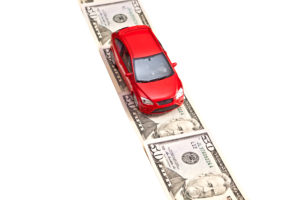
Negotiator: Initial total loss ACVs coming in low, might cost consumers, shops chance to repair
By onBusiness Practices | Insurance | Legal | Market Trends | Repair Operations
Another consumer advocate has reported encountering multiple instances of vehicles totaled because of erroneously low valuations.
Upon further scrutiny, the vehicles’ revised valuations suggested some of them could have been repairable, according to ZB Claim Services President John Walczuk.
The assessment is similar to an analysis by Texas appraiser Robert McDorman, general manager of Auto Claim Specialists. McDorman recently provided us with data from more than 700 total loss appraisal clause actions which showed vehicles were actually worth around $3,500 more than the insurance company had initially estimated. That discrepancy was large enough to flip some ostensibly totaled vehicles back to being repairable.
“It does not matter what MFG, Model or year,” Walczuk wrote in a June 23 email. He said Kias and Hyundais “are showing up under 4-6K on $20,000 dollar ACV vehicles.”
“Forget about trucks, 25-30 under is a regular finding,” he continued.
Walczuk’s account indicates that body shops and consumers might want to double-check the price the insurer used on their ostensibly “totaled” vehicles.
“Ask yourself, how many insureds actually question what the carrier states?” he wrote in a June 24 email. He argued that body shops should be more active on behalf of the customer.
“It is not their job to help, true, but they should be guiding to some degree,” Walczuk wrote.
However, he warned that carriers might be unreasonably wedded to their initial call to total a car.
“First off, carriers never reverse direction once they deem a vehicle a total,” Walczuk wrote in a June 24 email. “I had one in eight years, and that was because the shop guaranteed they would not pass the % threshold on repair. It happened to be a BMW M 550, but that was it.
“Yes the valuations I am seeing would shift some vehicles back to repair status, but the above tells you what the carriers position is on that. It is a dollar game. Why do a repair that costs more than a total with an offset in salvage?”
The used vehicle market is hot right now, and short supply makes totaled vehicles more lucrative despite its condition, according to Walczuk.
“The carriers are enjoying the low valuations as their cost of repairs is lower and the salvage is bringing super high price,” he wrote June 24.
Citing vAuto Available Inventory data, Cox Automotive on June 23 reported that while used vehicle supply “moderated through May … used-vehicle prices did not follow suit and instead set new record highs for the start of June.”
Cox said the average used vehicle price “soared” to $24,414, a new record — and up nearly $2,000 from the old record of $22,568 at the start of May.
“The pace of price increases sprinted through May, closing the month nearly 25% higher than the same period in 2020 and 2019,” Cox wrote in a news release. “Last summer, the average listing price surpassed the $20,000 mark for the first time and has been rising ever since.”
Cox predicted the used market would stay hot this summer, which means repairers and consumers might want to pay special attention to the ACVs cited to declare vehicles totals.
“The days of supply for used vehicles is not worsening but remains in an extremely tight supply situation,” said Charlie Chesbrough, Cox Automotive senior economist. “As a result, prices are rising rapidly. Higher prices likely are slowing the sales pace, which is allowing existing inventory to last longer. With the new-vehicle market still inventory-constrained and consumer interest in all vehicles elevated, high prices and short supply for the used market is likely to linger throughout the summer.”
He shared the following vehicles recently handled by his firm as “representative results” of the issue:
From New Jersey, which has a 100 percent damage-value threshold for a salvage title:
- 2015 Audi Q3. Offer: $15,600. Valuation: $19,100.
- 2016 GMC Sierra 2500: Offer $35,000. Settlement: $44,000.
- 2019 Nissan Sentra: Offer: $12,200. Valuation $18,900.
From New York, which mandates a salvage title at a 75 percent damage-value threshold:
- A 2018 Hyundai Elantra in New York. Offer: $10,600. Settlement: $15,000.
- A 2018 Toyota Highlander hybrid in New York: Offer: $31,100. Valuation: $39,200.
From Pennsylvania, which defines a salvage vehicle at an 100 percent threshold.
- 1998 Dodge Ram 2500 SLT Diesel: Offer: $9,000. Valuation: $18,900.
From Wyoming, which mandates a salvage title at the 75 percent threshold:
- 2008 Silverado HD 2500-Duramax: Offer: $17,300. Valuation: $27,800.
“The current market and valuations are also impacting claims for diminished value,” Walczuk wrote June 24. “Unless you are in a special class of vehicle, will call it the exotics, current market values tend to mask your real DV loss.”
CCC’s 2021 “Crash Course” found 20.5 percent of vehicles deemed total losses in 2020 — meaning shops missed out on the chance to repair one in every five automobiles. This is up from just 15 percent in 2010. The average totaled vehicle in 2020 had an actual cash value of $10,444, which the average repairable vehicle was worth $16.657. The average repair bill was $3,421 in 2020.
More information:
“June Opens with Higher Used-Vehicle Supply – And Record-High Prices”
Cox Automotive, June 23, 2021
Images:
The insurer’s initial total loss valuation offer might be too low, according to two consumer advocates. It’s possible the vehicle might not even be a total after a the vehicle value is reexamined, they said. (evp82/iStock)
Appraisal clause proceedings might result in a new vehicle cash value which flips a vehicle back into the repairable category. (Alex_Doubovitsky/iStock)

